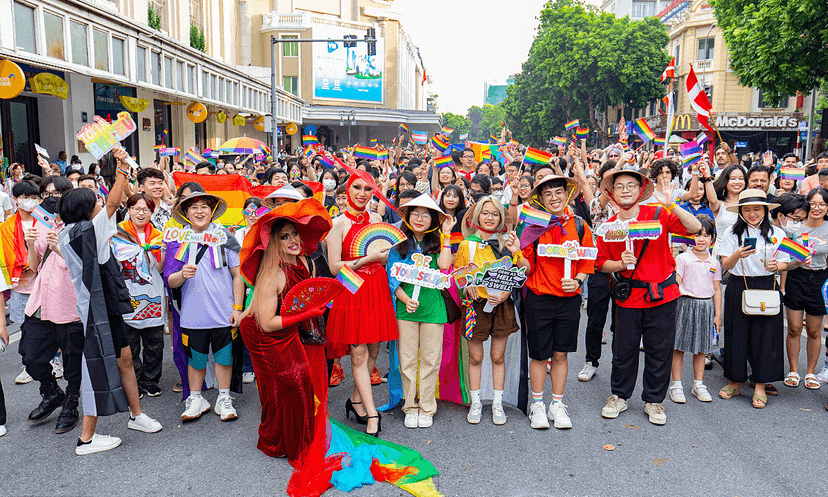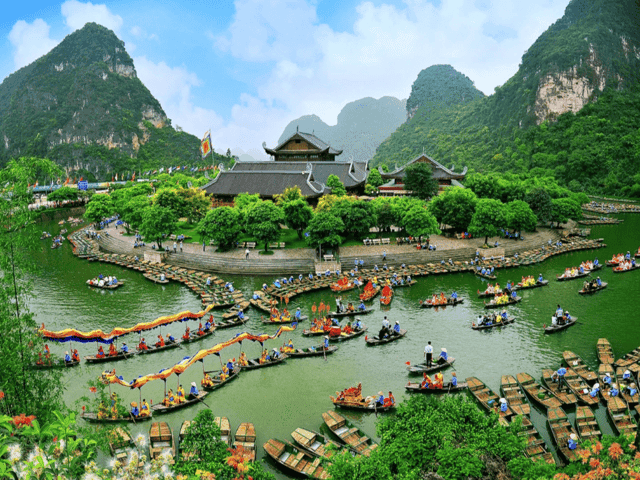Traveling to Vietnam in the rainy season offers unique beauty, budget-friendly perks, and fewer crowds. Discover the best tips, weather guide, and must-know advice for your Vietnam rainy season travel.
TABLE OF CONTENTS
1
When is the Rainy Season in Vietnam?
Northern Vietnam (Hanoi, Sapa, Ha Giang, Ha Long Bay)
Central Vietnam (Hue, Hoi An, Da Nang, Phong Nha)
Southern Vietnam (Ho Chi Minh City, Mekong Delta, Phu Quoc)
2
The Unexpected Beauty of Vietnam in the Rainy Season
3
Advantages of Traveling During Rainy Season
4
Things to Note When Visiting Vietnam in the Rainy Season
5
Tips for Making the Most of the Rainy Season
6
Is the Rainy Season Right for You?
7
Frequently Asked Questions (FAQs)
Most travelers imagine Vietnam with golden rice fields, sunny beaches, and perfect skies. Yet, what many don’t realize is that Vietnam’s rainy season unlocks a completely different charm - one filled with dramatic landscapes, lush greenery, vibrant rice terraces, and cultural authenticity.
Instead of shying away from the rain, adventurous travelers are discovering that traveling to Vietnam during the rainy season comes with unbeatable advantages: lower prices, fewer tourists, and a more intimate cultural experience.
In this guide, we’ll explore when the rainy season happens in Vietnam, what to expect in each region, the hidden beauty of monsoon landscapes, practical travel tips, and how to decide if this is the right time for you.
So, pack your light rain jacket - it’s time to see Vietnam in a way most tourists never do.

When is the Rainy Season in Vietnam?
Vietnam’s climate is incredibly diverse due to its length and varied geography. The rainy season doesn’t arrive everywhere at once—it depends on the region. Here’s a breakdown:
Northern Vietnam (Hanoi, Sapa, Ha Giang, Ha Long Bay)
- ♦ Rainy season: May–September
- ♦ Expect: Afternoon showers, occasional storms, and high humidity.
- ♦ Travel tip: Morning treks in Sapa or Ha Giang are best before rains roll in.
Central Vietnam (Hue, Hoi An, Da Nang, Phong Nha)
- ♦ Rainy season: September–December
- ♦ Expect: Heavier rains, risk of typhoons in October–November, occasional flooding.
- ♦ Travel tip: Keep an eye on weather alerts; coastal cities like Da Nang and Hue can see strong storms.
Southern Vietnam (Ho Chi Minh City, Mekong Delta, Phu Quoc)
- ♦ Rainy season: May–October
- ♦ Expect: Tropical downpours that are short and intense, often in the late afternoon.
- ♦ Travel tip: Don’t let the forecast scare you—sunny mornings are common, and rains usually pass quickly.

The Unexpected Beauty of Vietnam in the Rainy Season
While some see rain as a nuisance, seasoned travelers know that Vietnam’s rainy season transforms the landscape into a living postcard.
- → Sapa & Ha Giang – Rice terraces glow in vibrant shades of green, perfect for photographers.
- → Ha Long Bay – Misty skies add a dramatic, mysterious vibe to the limestone karsts.
- → Mekong Delta – Waterways become lively, and floating markets thrive.
- → Dalat & Central Highlands – Cooler weather, waterfalls at full flow, and blooming flora.
After rainfall, the air feels fresher and cooler, making city explorations and countryside hikes much more enjoyable than during the scorching dry season.
Advantages of Traveling During Rainy Season
Far from being a disadvantage, the monsoon months come with several perks for smart travelers:
- 1. Budget-Friendly Travel – Hotels and flights are significantly cheaper compared to peak season.
- 2. Fewer Tourists – Attractions like Ha Long Bay, Hoi An Ancient Town, or Sapa trekking trails are blissfully less crowded.
- 3. Authentic Local Experience – Travel feels less touristy, giving you more chances to interact with locals who often appreciate visitors braving the rainy months.
If you’re looking for a slower, more genuine travel experience, Vietnam rainy season travel might be your best choice.
Things to Note When Visiting Vietnam in the Rainy Season
Traveling during monsoon season isn’t without challenges. Here’s what you need to know:
- • Weather Patterns – Rain often comes in short bursts, especially in the south. It rarely rains nonstop for days.
- • Flood Risks – Central Vietnam, especially Hoi An and Hue, can experience flooding in October–November. Always check local advisories.
- • Flexible Itinerary – Outdoor activities may be rescheduled. Keep backup indoor activities like cooking classes, coffee tastings, or museum visits.
- • Health & Safety –
- • Bring mosquito repellent (mosquitoes thrive in wet weather).
- • Wear quick-dry clothing and waterproof shoes.
- • Carry travel insurance that covers weather-related delays.
Tips for Making the Most of the Rainy Season
Rainy season travel doesn’t mean staying indoors all day. With the right preparation, you can make the most of your trip:
- • Pack Light Waterproof Gear – A poncho, compact umbrella, and waterproof bag covers go a long way.
- • Plan Indoor Activities – Sign up for Vietnamese cooking classes, explore traditional coffee shops, or visit art museums.
- • Start Early – Most days start sunny; plan excursions in the morning before afternoon rains.
- • Choose Rain-Friendly Destinations –
- • Ninh Binh (less rainfall, stunning karst landscapes).
- • Phu Quoc Island (some areas are drier even in monsoon).
- • Dalat (mountain climate, refreshing even in rain).

Is the Rainy Season Right for You?
So, should you book your ticket for Vietnam during the monsoon? It depends on your travel style.
✅ Perfect for:
- » Budget travelers looking for cheaper rates.
- » Photographers chasing lush green landscapes.
- » Travelers who enjoy peace and fewer crowds.
❌ Not ideal for:
- » Beach lovers who want guaranteed sunshine every day.
- » Travelers who dislike unpredictable weather.
If you’re flexible, adventurous, and open to surprises, traveling to Vietnam during the rainy season might be one of your most rewarding trips ever.
Frequently Asked Questions (FAQs)
1. Is it worth traveling to Vietnam during the rainy season?
Yes! With fewer tourists, vibrant landscapes, and cheaper costs, it can be an amazing experience if you’re flexible with weather changes.
2. Does it rain all day in Vietnam during the monsoon?
Not usually. In the south, rains are short and intense, mostly in the afternoon. In the north and central regions, there can be longer showers, but rarely nonstop.
3. What should I pack for Vietnam’s rainy season?
Light waterproof clothing, quick-dry shoes, insect repellent, and a foldable umbrella are essentials.
4. Which destinations are best during rainy season?
Ninh Binh, Dalat, Phu Quoc, and Ha Long Bay are great options. Sapa and Ha Giang are stunning too but check for landslides during heavy rain.
5. Is it safe to travel during Vietnam’s typhoon season?
Yes, but with caution. Typhoons mostly affect central Vietnam from September to November. Always monitor local weather updates.
6. Are flights and transport affected by the rain?
Sometimes. Heavy rain or storms can delay flights and buses, so having travel insurance is highly recommended.
Traveling Vietnam during the rainy season isn’t about avoiding the rain - it’s about embracing a different side of the country’s beauty. From misty mountain views to lush rice terraces and quieter cultural sites, the monsoon reveals Vietnam in its raw, authentic form.
With smart planning, waterproof essentials, and an open mindset, your trip could turn into one of the most memorable adventures you’ve ever had.
So, don’t wait for perfect sunshine - let Vietnam’s rainy season surprise you with its charm.












.jpg&w=828&q=75)


